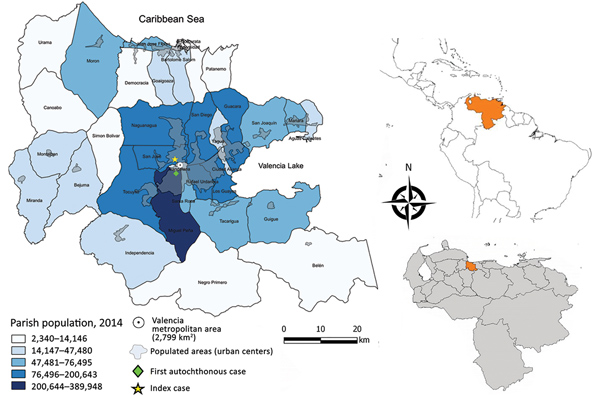Volume 25, Number 4—April 2019
Research
Spatial Dynamics of Chikungunya Virus, Venezuela, 2014
Figure 1

Figure 1. Area of study on the spatial dynamics of chikungunya virus, Carabobo state, Venezuela, 2014. Blue shading indicates 2014 population by parish. Most persons live in the capital city of Valencia (892,530 inhabitants); within the metropolitan area, poorer settlements are located mainly in the southern area, and the most organized and urbanized medium- and high-level neighborhoods are situated toward the north-central part. Insets indicate location of Carabobo state in Venezuela and Venezuela in South America.
1These authors contributed equally to this article.
2These authors contributed equally to this article.
Page created: March 17, 2019
Page updated: March 17, 2019
Page reviewed: March 17, 2019
The conclusions, findings, and opinions expressed by authors contributing to this journal do not necessarily reflect the official position of the U.S. Department of Health and Human Services, the Public Health Service, the Centers for Disease Control and Prevention, or the authors' affiliated institutions. Use of trade names is for identification only and does not imply endorsement by any of the groups named above.